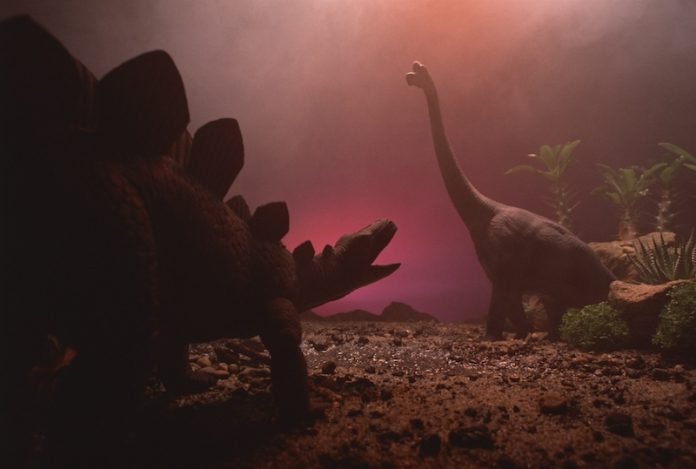
Researchers from the University of Bristol have made an exciting discovery about dinosaurs that might explain why they ruled the Earth for an impressive 160 million years.
According to their study, published in Royal Society Open Science, the secret to the dinosaurs’ success lay in their incredible ability to move in various ways, making them faster and more dynamic than their ancient rivals.
During the Triassic period, which lasted from 252 to 201 million years ago, the Earth witnessed the rise of the dinosaurs. This era is crucial because it marks the time when dinosaurs first appeared and started to become the dominant creatures on our planet.
The research team took a close look at the limb structures of many reptiles from this period, comparing dinosaurs with their contemporary competitors to understand why dinosaurs became so successful.
One of the key findings of the study was that dinosaurs and their close relatives were mostly bipedal, meaning they walked on two legs. This trait, along with their cursoriality, or running ability, set them apart from their competitors.
The dinosaurs were not just fast; they had a variety of running styles, showcasing their adaptability. On the other hand, their competitors, the Pseudosuchia, which are the ancestors of modern crocodiles, were not as versatile in their movement.
Despite having some bipedal and fast-moving types among them, the pseudosuchians could not match the dinosaurs’ range of locomotion.
Amy Shipley, a student involved in the research, highlighted how changes in the climate and environmental pressures for food might have been pivotal moments for dinosaurs.
These conditions could have favored dinosaurs’ efficient water conservation traits and their superior mobility, enabling them to thrive when resources were scarce.
The end of the Triassic period was marked by a mass extinction event that wiped out many species, including most of the pseudosuchians.
Dinosaurs, however, not only survived but also expanded their variety of movements. Professor Mike Benton pointed out that after this extinction, dinosaurs were able to explore and dominate new niches, thanks to their diverse ways of moving.
An interesting aspect of the study, as explained by Dr. Armin Elsler, is that dinosaurs did not necessarily evolve their locomotion styles at a rapid pace.
Instead, their ability to move in various ways was inherently advantageous, allowing them to capitalize on opportunities, especially after the mass extinction events.
Dr. Tom Stubbs added a perspective on the common image of dinosaurs as massive, slow creatures. He clarified that the earliest dinosaurs were actually quite small, agile, and bipedal, which would have been beneficial for hunting and avoiding predators.
The diversity in how dinosaurs moved is a testament to their adaptability. As Dr. Suresh Singh mentioned, this versatility in locomotion allowed dinosaurs to explore different lifestyles and body forms as they evolved.
From the small, quick ancestors to the giant, possibly armored or quadrupedal dinosaurs of later periods, their ability to adapt their movement was key to their long-term success on Earth.
This study sheds light on the fascinating capabilities of dinosaurs, revealing that their mastery of movement was a crucial factor in their dominance over millions of years.
It shows us that the story of dinosaurs is not just about their size or strength but also about their remarkable adaptability and versatility.
The research findings can be found in Royal Society Open Science.
Copyright © 2024 Knowridge Science Report. All rights reserved.



